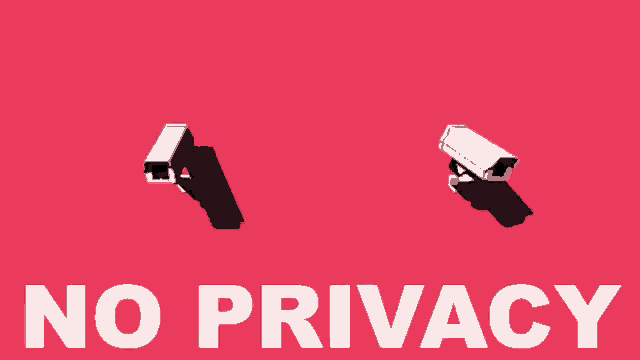In the digital age, companies face the challenge of finding the right candidates for job openings. Traditional interview methods are time-consuming and use up significant resources. Luckily, digital interview tools offer a straightforward solution to simplify the recruitment process.

However, choosing the right tool can be overwhelming, given the numerous options available. This article will help you choose the appropriate digital interview tool for your company’s hiring and recruitment needs.
What is a Digital Interview Tool?
A digital interview tool is software that allows you to interact with potential candidates remotely. Choosing the right tool is important because it can help save time and reduce costs.
With the right tool, you can easily screen a large pool of candidates and personalize the interview process to meet your specific needs. Additionally, you can conduct interviews from anywhere, which saves travel expenses.
In this article, we will guide you through a step-by-step process of evaluating and comparing digital interview tools, establishing criteria, and shortlisting the ones that meet your demands.
We will also provide some useful tips to help you choose the right tool. By following this guide, you will have all the necessary information to find the perfect digital interview tool for your company’s hiring needs.
Recruiting suitable talent is essential for any company’s success. However, traditional interview methods are often challenging due to scheduling conflicts, geographic limitations, and biased evaluations. Digital interview tools offer a convenient and efficient way to overcome these obstacles, making the recruitment process smoother and more effective.
Understanding the Benefits of Digital Interview Tools

Digital interview tools have several advantages over traditional interview methods. These tools enable recruiters to conduct interviews remotely, eliminating the necessity of meeting the candidates in person and making it possible to include candidates from diverse locations.
This not only enriches the pool of potential candidates but also increases the likelihood of securing the right match. In addition, digital interview tools permit recording the interviews, which can be reviewed later and shared with all relevant stakeholders.
This simplifies the assessment process and helps in making better decisions collaboratively. In the following sections, we will explore some key benefits of using digital interview tools.
Convenience and Flexibility
Digital interview tools eliminate the need for in-person interviews, making it convenient for both recruiters and candidates. It allows interviews to be conducted remotely, saving time and reducing costs associated with travel and logistics. In addition, this technology improves the efficiency of the hiring process. Candidates from different locations can participate in the interview process, providing wider access to job opportunities.
Efficient Evaluation
Digital interview tools provide features that simplify the evaluation process. Recruiters can record interviews and review them later, allowing for a more comprehensive assessment. Multiple stakeholders can also access and evaluate the interviews, enabling collaborative decision-making. This streamlined evaluation process speeds up the hiring timeline and ensures fair and objective assessments.
Time and Cost Savings
Digital interview tools significantly reduce the time and cost associated with traditional interviews. Scheduling conflicts and travel arrangements are eliminated, saving both recruiters and candidates valuable time. Additionally, the elimination of physical interviews reduces expenses related to travel, accommodation, and venue bookings. These savings contribute to a more efficient and cost-effective hiring process.
Improved Data Management
Digital interview tools offer robust data management capabilities. Interview recordings, evaluations, and feedback can be securely stored and accessed whenever needed. This centralized data management simplifies the candidate selection process and enables recruiters to refer back to interviews for future reference or comparison.
Assessing Your Hiring Needs

Before selecting a digital interview tool, it’s essential to evaluate your specific hiring requirements. Consider the size of your organization, the number of positions you typically hire for, the desired level of customization, and the integration capabilities with your existing HR systems.
Knowing your hiring requirements can assist you in narrowing down your choices and selecting a tool that is in line with your objectives. Here are some key factors to consider when assessing your hiring needs:
Types of Positions
Start by understanding the types of positions you frequently hire for. Consider whether you primarily recruit for entry-level roles, mid-level positions, executive-level positions, or a combination of all. Different positions may require specific interview formats or evaluation methods, which can influence the type of digital interview tool you choose.
Volume of Hiring
To assess the hiring strategy of your organization, it’s important to consider the volume of hiring. Do you face a frequent turnover or require new employees often? If your hiring rate is high, it may be beneficial to use a digital interview tool that provides efficient scheduling options and automated workflows. This will allow you to handle a large number of interviews simultaneously.
Interview Format
Determine the interview format that best suits your hiring process. Will you primarily conduct live interviews, recorded interviews, or a combination of both? Consider whether you need a tool that offers real-time interaction with candidates or if the ability to review pre-recorded interviews is sufficient. The interview format should align with your organization’s preferences and the nature of the positions you’re hiring for.
Data Security and Compliance
It is essential to consider data security and compliance when choosing a digital interview tool. Evaluate the tool’s data security policies, including access controls, encryption protocols, and compliance with data protection laws like GDPR or CCPA. Ensure that the tool meets your organization’s data privacy policies and requirements.
Key Factors to Consider When Selecting a Digital Interview Tool

When evaluating digital interview tools, several key factors should be taken into account:
1. Compatibility and Integration
When choosing a digital interview tool, it is essential to consider its compatibility and integration capabilities with your existing systems. A seamless integration ensures that the tool works well with your company’s infrastructure, making the hiring process more efficient and effective. Here are some important factors to evaluate when assessing compatibility and integration.
Applicant Tracking System (ATS) Integration
To simplify the candidate management process, verify if the digital interview tool is compatible with your ATS. If both systems can work together seamlessly, you can automatically transfer important candidate data, such as contact details, resumes, and interview results, without the need for manual data entry. This integration reduces the risk of errors.
Email and Calendar Integration
When choosing a tool, you should check if it works well with your email and calendar systems. By integrating with your email, you can use the tool to conveniently send out interview invitations, reminders, and follow-up messages. Meanwhile, integrating with your calendar system ensures that the tool is synced with your schedules, minimizing the chances of scheduling conflicts. This helps streamline the coordination between recruiters, candidates, and hiring managers, ensuring efficient communication.
Collaboration Tools Integration
If your company uses tools for teamwork such as project management software, systems for sharing documents, or platforms for team communication, you should examine whether the digital interview tool can harmonize with them. Coalescence with collaboration tools allows comfortable communication, communal sharing of feedback, and shared decision-making among the team members who are involved in hiring.
Single Sign-On (SSO) Integration
If your company uses a system that lets you sign in with just one set of credentials, check if the digital interview tool can work with it. By integrating with this system, you won’t have to remember separate login details, and you’ll be able to make use of your existing authentication measures to keep everything secure.
Custom API Integration
Evaluate whether the digital interview tool offers custom API integration options. Custom API integration allows you to connect the tool with proprietary or specialized systems unique to your organization. This level of integration ensures a tailored and cohesive experience throughout your hiring process.
2. User-Friendliness and Accessibility

It is crucial to consider the user-friendliness and accessibility of a digital interview tool while selecting one. The ease of navigation, intuitiveness, and ability to be used by all users can significantly improve the recruitment process. Here are key factors to evaluate in terms of user-friendliness and accessibility:
Ease of Use
When selecting a recruitment tool, think about how easy it is to use for both recruiters and candidates. The process of creating, scheduling, and conducting interviews should be straightforward and uncomplicated. Look for features like drag-and-drop options, pre-designed templates, and step-by-step guidance that make the entire process easier.
Clear Instructions and Help Resources
Determine if the tool provides clear instructions and helpful resources. It should offer on-screen guidance, tooltips, or contextual prompts that assist users in understanding each step of the process. Additionally, comprehensive documentation, video tutorials, or a knowledge base can serve as valuable resources for users to troubleshoot issues or learn advanced features.
Accessibility Features
Consider whether the tool incorporates accessibility features to cater to users with disabilities or diverse needs. Look for features such as adjustable font sizes, color contrast options, keyboard navigation support, and compatibility with assistive technologies. These features ensure that the tool is accessible and usable by a wide range of individuals.
Multi-Device Compatibility
Evaluate whether the tool is compatible with different devices and operating systems. It should be accessible from desktop computers, laptops, tablets, and mobile devices, allowing users to access and manage interviews on the go. Cross-platform compatibility ensures flexibility and convenience for both recruiters and candidates.
3. Features and Customization Options

Evaluate the features of the digital interview tool and check if they match your specific hiring needs. These include live interviews, recorded interviews, video responses, scheduling options, and collaboration capabilities.
Also, see if you can personalize the tool to conform to your company’s branding and create a unique interviewing experience for candidates. Every organization has distinct requirements and preferences, so picking a tool that suits your specific needs is significant.
Below are essential factors to consider when it comes to features and customization options:
Interview Types
Evaluate the types of interviews supported by the tool. Determine if it caters to your preferred interview formats, such as live video interviews, pre-recorded video interviews, audio interviews, or written interviews. The tool should provide flexibility to conduct different types of interviews based on your hiring process and the positions you’re recruiting for.
Question Library
Check if the tool provides a question library or question bank feature. This feature allows you to access a database of pre-defined interview questions, saving time in creating interview scripts from scratch. Additionally, the ability to create and save your own customized question templates can further streamline the interview preparation process.
Video and Audio Recording
Determine if the tool enables video and audio recording during interviews. This feature is essential for both live and pre-recorded interviews. Video and audio recordings allow you to review and analyze candidate responses, ensuring a thorough evaluation and providing valuable insights for the hiring decision. The ability to timestamp specific moments of the interview can be beneficial for reference or sharing.
Branding and Customization
Consider whether the tool allows for branding and customization. The ability to add your organization’s logo, color scheme, and custom email templates creates a professional and consistent brand experience for candidates. Customization options also include tailoring the tool’s interface to match your organization’s visual identity and branding guidelines.
Data Analytics and Reporting
Determine if the tool provides data analytics and reporting features. Robust analytics enable you to track key metrics, visualize trends, and gain insights into your hiring process. Look for features like dashboard views, graphical representations of data, and exportable reports that can be shared with stakeholders or used for future analysis.
4. Security and Data Privacy

Data security and privacy are paramount when selecting any digital tool, especially those handling sensitive candidate information. Ensure that the tool complies with industry-standard security protocols and regulations, such as GDPR or CCPA.
Look for features like data encryption, secure storage, access controls, and compliance certifications to safeguard candidate data. Here are key aspects to consider regarding security and data privacy:
Data Encryption
To confirm if a tool has secure data practices, check if it uses encryption techniques. Encryption is a way of protecting sensitive information like candidate profiles, interview recordings, and evaluations by converting it into an unreadable format. To safeguard data during transmission and storage, ensure the tool uses industry-approved encryption protocols like SSL/TLS (Secure Sockets Layer/Transport Layer Security).
User Authentication
To ensure the security of the tool, it’s important to check how users are authenticated. Two-factor authentication (2FA) is a strong security measure that adds an extra layer of protection by requiring users to verify their identity using a unique code or biometric authentication.
This helps to prevent unauthorized users from accessing the tool. It’s essential to evaluate the tool’s user authentication methods as part of the security assessment.
Compliance with Data Protection Regulations
Confirm if the tool complies with applicable data protection regulations, such as the General Data Protection Regulation (GDPR) or the California Consumer Privacy Act (CCPA). Compliance demonstrates the tool’s commitment to protecting personal data and respecting individuals’ privacy rights.
Data Backup and Disaster Recovery
Inquire about the tool’s data backup and disaster recovery measures. Regular data backups protect against data loss, while disaster recovery plans ensure business continuity in case of unforeseen events. These measures contribute to the overall security and availability of your interview data.
If your organization develops software or digital tools, it is recommended to get a cheap code signing certificate from a reliable certification authority at an affordable cost. By digitally signing the code, code signing certificates provide a way to verify the authenticity and security of the software. This helps to ensure that the software is legitimate and has not been tampered with while providing a sense of security and trust for users.
5. Pricing and Cost-effectiveness

Consider the pricing structure of the digital interview tool and evaluate its cost-effectiveness for your organization. Some tools charge per interview, while others offer subscription plans or bundle services.
Compare the pricing models, assess the value provided, and ensure that the tool fits within your budget without compromising on essential features. Here are key factors to consider regarding pricing and cost-effectiveness:
Pricing Tiers
Evaluate the pricing tiers available within each subscription plan. Some tools offer multiple tiers with varying features and usage limits. Assess whether the features included in each tier match your requirements. Consider the scalability of the pricing tiers to ensure they can accommodate your organization’s growth and changing needs.
Return on Investment (ROI)
Consider the potential return on investment offered by the tool. Assess how the tool’s features and capabilities contribute to streamlining your hiring process, improving efficiency, and reducing costs associated with traditional interviewing methods. Calculate the potential time and resource savings, as well as the impact on the quality of hires, to determine the overall ROI.
Free Trial or Demo
Take advantage of any free trial or demo offered by the tool. This allows you to test the tool’s functionalities, assess its suitability for your organization, and gather feedback from users before making a financial commitment. Use the trial period to evaluate the tool’s ease of use, performance, and the level of support provided by the vendor.
It’s also a good idea to compare free plans. tl;dv, for example, has a free plan that includes unlimited recordings, transcripts, and translations. You can even use their AI features and get super accurate speaker recognition, too. All for free!
Contract Terms
Review the contract terms and conditions associated with the tool. Pay attention to factors such as contract duration, cancellation policy, and any potential penalties or fees for early termination. Ensure that the contract terms align with your organization’s requirements and provide the necessary flexibility.
Vendor Reputation and Support
Research the vendor’s reputation and customer support. Evaluate their responsiveness, availability, and willingness to address any technical issues or inquiries. A reliable vendor with a strong track record of customer satisfaction and support contributes to a positive user experience and long-term cost-effectiveness.
Researching Available Digital Interview Tools
Once you have identified the key factors that are important to your hiring needs, it’s time to research the available digital interview tools in the market. Explore reputable software review websites, industry forums, and HR technology blogs to gather information and insights.
Pay attention to user reviews, ratings, and testimonials to gauge the satisfaction levels of existing users. When embarking on the journey to find the right digital interview tool for your hiring needs, it’s essential to conduct thorough research to identify the available options. Here are some steps to help you in your research process:
Online Search
Begin by conducting an online search for digital interview tools. Use search engines and explore relevant industry websites, forums, and directories that provide information about various tools. This initial search will give you an overview of the tools available in the market.
Ask for Recommendations
Reach out to your professional network, colleagues, or fellow recruiters for recommendations. Seek their input on digital interview tools they have used or are familiar with. Their firsthand experiences and recommendations can provide valuable insights and save you time in the research process.
Vendor Websites and Demos
Visit the websites of the digital interview tool vendors. Explore their product pages, feature descriptions, and case studies to understand what each tool offers. Some vendors also provide live demos or recorded videos showcasing the tool’s functionalities. Take advantage of these resources to gain a firsthand experience with the tools.
Evaluate Feature Sets
Assess the features and functionalities of each tool. Compare them against your organization’s specific hiring needs and requirements. Look for tools that align with your preferred interview formats, evaluation criteria, and candidate management processes. Create a checklist of desired features to facilitate your evaluation process.
Check Customer Support
Investigate the customer support provided by each tool vendor. Look for channels of communication, such as email, phone, or live chat, through which you can reach out for assistance or technical support. Prompt and helpful customer support is crucial for a smooth implementation and usage of the tool.
Comparing and Evaluating Options

Now that you have a list of potential digital interview tools, it’s crucial to compare and evaluate them based on your requirements. Consider the following steps:
Analyzing Features and Functionality
Review the features and functionality of each tool in detail. Compare their offerings with your outlined hiring needs. Look for unique features that differentiate them from others in the market. Analyze how well each tool aligns with your desired interview process and candidate evaluation methods.
Reading User Reviews and Testimonials
User reviews and testimonials provide valuable insights into the real-world experiences of using digital interview tools. Read both positive and negative reviews to understand the strengths and limitations of each tool. Pay attention to reviews from organizations with similar hiring needs to yours.
Seeking Recommendations and Feedback
Reach out to industry peers, HR professionals, or recruitment experts who have experience using digital interview tools. Seek their recommendations and ask for any feedback or insights they may have. Their firsthand knowledge can provide valuable guidance in making an informed decision.
Making the Final Decision

With the research and evaluation phase complete, it’s time to make the final decision. Consider the following steps:
Free Trials and Demos
Take advantage of any free trials or demos offered by the digital interview tool vendors. This allows you to test the tool’s interface, functionality, and overall user experience. Use this opportunity to simulate real interview scenarios and assess whether the tool meets your expectations. Pay attention to factors like ease of use, video quality, and available features during the trial period.
Consultation with Vendor Representatives
Schedule consultations with the vendor representatives of the shortlisted digital interview tools. Discuss your specific hiring needs, integration requirements, and any concerns you may have. Use this opportunity to clarify any doubts and gain a deeper understanding of how the tool can support your hiring process. Vendor representatives can also provide insights into implementation timelines and support services.
Consideration of Long-term Scalability
When making the final decision, consider the long-term scalability of the chosen digital interview tool. Evaluate whether the tool can accommodate your organization’s growth and evolving hiring needs. Assess factors like the vendor’s reputation, their commitment to product development, and the ability to adapt to future technological advancements.
Implementing and Optimizing the Chosen Digital Interview Tool
Once you have selected the right digital interview tool for your hiring needs, it’s time to implement it effectively. Consider the following steps:
- Set up the tool according to your organization’s requirements, including user roles, permissions, and integrations with existing HR systems.
- Provide training sessions for recruiters and hiring managers to ensure they are proficient in using the tool’s features and functionalities.
- Communicate the implementation of the digital interview tool to your candidates, explaining the benefits and the steps they need to follow during the interview process.
To optimize the tool’s usage:
- Continuously gather feedback from recruiters, hiring managers, and candidates to identify areas for improvement and address any challenges they may face.
- Stay updated on new features and updates released by the tool’s vendor. Implement relevant updates to enhance the user experience and take advantage of improved functionalities.
Conclusion
Selecting the right digital interview tool can revolutionize your hiring process, saving time, improving efficiency, and enhancing candidate evaluation. By considering factors such as compatibility, user-friendliness, features, security, and cost-effectiveness, you can make an informed decision. Remember to thoroughly research, evaluate, and compare available options before implementing the chosen tool. With the right digital interview tool in place, you can streamline your hiring process and find the best candidates for your organization.





